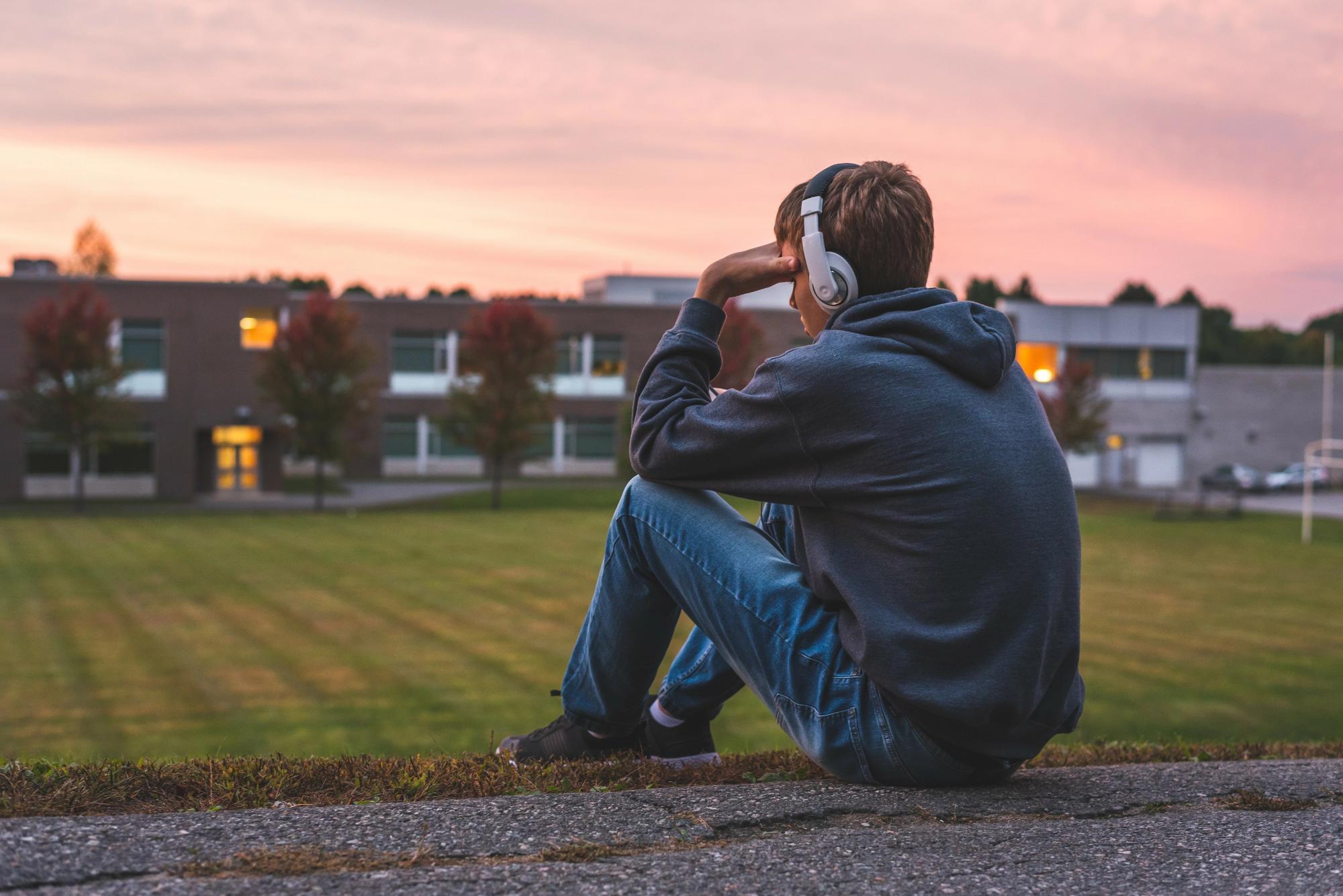Marijuana Misuse and Addiction: Signs, Symptoms and Treatment



As a Clinical Research Specialist, writer, and person with lived experience in mental health recovery, Grace blends clinical research with honest storytelling to inspire healing and hope. In her free time, she enjoys writing books for young adults, an age when she needed stories the most.

Dr. Mala, is the Chief Clinical Officer at Recovery.com, where she develops impartial and informative resources for people seeking addiction and mental health treatment.




As a Clinical Research Specialist, writer, and person with lived experience in mental health recovery, Grace blends clinical research with honest storytelling to inspire healing and hope. In her free time, she enjoys writing books for young adults, an age when she needed stories the most.

Dr. Mala, is the Chief Clinical Officer at Recovery.com, where she develops impartial and informative resources for people seeking addiction and mental health treatment.
- Marijuana can be addictive and harmful.
- Regular use can damage memory and cognition, and even cause cancer.
- Medical and behavioral treatment offer hope and healing.
Rolling a blunt one too many times can roll into a problem. Marijuana has the potential for addiction and bodily harm, and with it becoming legal in some states, now poses an even greater risk.
Many people use weed regularly without understanding the possible risks. We’ll explore those here, plus signs of marijuana addiction and how to get treatment.
What Is Marijuana?
Marijuana comes from the dried leaves and flowers of the cannabis plant1. It grows around the world, mostly in tropical and humid places. The THC compound in cannabis (tetrahydrocannabinol) causes the mind and reality-altering effects2 associated with marijuana use.
People typically smoke the dried leaves of the cannabis plant or the resin of its flowers. A rolled-up ‘cigarette’ of marijuana is called a blunt; some people roll and smoke their own or buy premade blunts. To smoke the more potent resin, people use bongs. People can also take edibles that take longer to set in but have longer-lasting effects (for example, pot brownies.)
Marijuana for medical use also occurs in some American states. For example,it can help cancer patients experience less nausea1 after chemotherapy. And Jamaican women commonly brew cannabis tea to relieve morning sickness3.
Is Marijuana Addictive?
Despite public perception touting weed as safe and nonaddictive, marijuana use can lead to an addiction4. It’s not safe, either. It can lead to addiction the same way other addictive drugs can: by altering the reward pathway in the brain4 and making changes in its functions.
You can quickly build a tolerance to marijuana, meaning you need to take more to experience the same effects as your first experience. Taking more and more further alters your brain. Soon, you can start craving marijuana and experiencing intense urges to take it, until it becomes consuming and starts having pronounced negative effects on your life.
Ten percent of people who start smoking weed become addicted5; 30% of those who smoke it regularly meet addiction criteria. Those who start smoking earlier in life run a higher risk for addiction since marijuana can have a stronger effect on an adolescent brain6.
Effects of Marijuana Use
Marijuana has immediate and long-term effects. People often take marijuana for its immediate effects; to relax, fall asleep, or center their focus. Different strains of marijuana give different highs1, known as head or body highs. A head high is more conducive to focus while body highs offer a pronounced sense of relaxation.
Immediate Effects
After taking marijuana, you’ll likely experience
- A strong sense of relaxation and calm
- Miscalculating time and distance
- Paranoia
- Red, bloodshot eyes
- Food cravings
The initial effects of weed7 can last 2-10 hours, depending on its potency. Some people enjoy the effects, while others experience intense anxiety, paranoia, psychosis, and panic attacks.
Long-term Effects
Regular marijuana use leads to various long-term effects8, including
- Memory damage
- Schizophrenia
- Lung cancer due to the carcinogens found in pot smoke3
- Respiratory conditions from smoking, like bronchitis or regular coughing
- Cannabinoid Hyperemesis Syndrome, which means continuous vomiting
- Poor concentration
- Poor coordination
- Cognitive and executive dysfunction
The longer someone uses marijuana, and the more they take it, the more intense the long-term effects can be. For example, someone who has smoked marijuana once a week for several years likely won’t experience the same slew of negative effects as someone who’s smoked daily for the last decade.
Signs of Marijuana Use
Someone who’s ingested marijuana will show a few key signs, both physically and psychologically.
Physical Signs
- Red eyes, like they’ve been crying or rubbing at them.
- Seeming disconnected from reality, out of it.
- Unusually relaxed and giggly.
- Talking slowly and not comprehending when other people talk.
- Smelling of weed, which has a mossy, skunky odor.
Psychological Signs
Someone may show psychological signs of marijuana use, either in addition to or instead of physical signs. Examples include
- Low mood
- Disinterest in their usual activities
- Becoming emotionally distant and reserved
Withdrawal Symptoms
Once the brain and body grow accustomed to marijuana, especially high amounts of it, stopping can lead to detrimental effects. Though marijuana withdrawals aren’t deadly and typically not harmful long-term, they’re still uncomfortable3 and can prompt further use to curb the negative effects. People often experience physical and psychological weed withdrawals3.
Physical Withdrawal Symptoms
- Nausea
- Insomnia
- Runny nose
- Sweating
- Muscle cramps
Psychological Withdrawal Symptoms
Some people use marijuana to self-medicate anxiety and unease. These symptoms, and a host of other psychological symptoms, can occur once they stop.
- Irritability
- Restlessness
- Discomfort and agitation
- Pronounced return of anxiety as regular symptoms combine with withdrawals
Treatment Options for Marijuana Misuse and Addiction
Treatment options for marijuana addiction abound. You can go to a residential rehab, where you’ll stay for 28+ days to address underlying emotional issues and build coping strategies to maintain recovery outside treatment.
Rehabs typically combine 2 elements of care: behavioral and medical. You can access this care at an outpatient level, too, separately or concurrently.
Behavioral Treatment
Therapy addresses the thoughts and feelings leading to marijuana use and, subsequently, marijuana addiction. For example, if your marijuana use started as a way to relax and mitigate anxiety, you’ll find a new approach to managing symptoms through therapies like CBT, DBT, and PE. Here’s what those mean:
- Cognitive behavioral therapy (CBT) focuses on identifying and challenging untrue thoughts or beliefs before they can affect your emotional state and lead to unhealthy coping measures.
- Dialectical behavioral therapy (DBT) still helps you identify harmful thoughts and beliefs but focuses on accepting them, rather than challenging them, and managing your responses.
- Prolonged exposure9 (PE) works by exposing you to a trigger to help you become desensitized to it. People with post-traumatic stress disorder (PTSD) and obsessive compulsive disorder (OCD) can find PE particularly effective for managing the intense emotional responses to triggers that might lead to substance use.
Holistic therapies can help, too. Many people benefit from a blend of evidence-based therapies, like the ones above, and holistic approaches like art therapy, yoga, and creative writing.
Medical Treatment
Medical treatment for marijuana addiction includes medication-assisted treatment (MAT) as needed. Some medications can alleviate withdrawal symptoms and speed up the onset3, helping the body return to homeostasis quicker.
The Importance of Early Intervention
Intervening early is one of the best ways to prevent addiction. This applies to all drugs, marijuana included. The sooner someone takes steps to stop their use, the easier and less disruptive returning to sobriety can be. The intervention may come from within, from healthcare professionals, or loved ones.
Family Support Systems
Family members are often the first to notice a loved one’s struggle with marijuana use and addiction. Because of this, they can be the first to intervene through a formal intervention or a more casual conversation voicing their concerns and asking how they can help. How you approach the situation depends on your unique circumstances.
Family members (chosen family or related) also serve as a crucial support system in recovery. Education on addiction, mental health, and recovery can help them become stronger allies for their loved one’s healing.
Professional Help
A myriad of professionals can help people with a marijuana addiction recover. Your first stop may be your primary care provider, or the doctor you see for regular check-ups and arising health needs. They can guide you to the next steps in your treatment and recommend an effective path for you. This may include inpatient care or outpatient services, like therapy.
Therapists can alleviate the emotional factors contributing to marijuana use and addiction, using proven evidence-based methods (or holistic therapies) to treat disorders like anxiety, depression, and trauma. With these underlying causes addressed, you’re less likely to feel a desire for marijuana.
Attending a residential rehab or outpatient treatment for marijuana addiction offers a comprehensive healing package. Regular therapy sessions can too, as can peer support groups like 12-Step meetings or SMART Recovery meetings.
Find Rehab Centers for Marijuana Addiction
Many drug rehabs treat marijuana addiction, offering different approaches, therapies, and amenities to treat the causes and symptoms of addiction. The best rehab is the one that’s right for you.
You can use Recovery.com to find marijuana rehabs and see their insurance information, photos, reviews, and more all in one place.
-
“Cannabis.” Drug Enforcement Administration (DEA) Museum, https://museum.dea.gov/exhibits/online-exhibits/cannabis-coca-and-poppy-natures-addictive-plants/cannabis#:~:text=Marijuana%20is%20grown%20and%20trafficked,%2C%20South%20Africa%2C%20and%20Nigeria.
-
Abuse, National Institute on Drug. Cannabis | National Institute on Drug Abuse (NIDA). 24 Sept. 2024, https://nida.nih.gov/research-topics/cannabis.
-
Mack, Alison, and Janet Joy. “HOW HARMFUL IS MARIJUANA?” Marijuana as Medicine? The Science Beyond the Controversy, National Academies Press (US), 2000. www.ncbi.nlm.nih.gov, https://www.ncbi.nlm.nih.gov/books/NBK224396/.
-
Zehra, Amna, et al. “Cannabis Addiction and the Brain: A Review.” Journal of Neuroimmune Pharmacology, vol. 13, no. 4, 2018, pp. 438–52. PubMed Central, https://doi.org/10.1007/s11481-018-9782-9.
-
CDC. “Understanding Your Risk for Cannabis Use Disorder.” Cannabis and Public Health, 26 Feb. 2024, https://www.cdc.gov/cannabis/health-effects/cannabis-use-disorder.html.
-
“Cannabis/Marijuana Use Disorder.” Yale Medicine, https://www.yalemedicine.org/conditions/marijuana-use-disorder.
-
Immediate Health Effects | Cannabis. https://cannabis.colorado.gov/health-effects/immediate-health-effects.
-
Marijuana: Additional Health Effects for Adults | Cannabis. https://cannabis.colorado.gov/additional-health-effects-for-adults.
-
“Prolonged Exposure (PE).” https://www.apa.org/ptsd-guideline/treatments/prolonged-exposure.
Our Promise
How Is Recovery.com Different?
We believe everyone deserves access to accurate, unbiased information about mental health and recovery. That’s why we have a comprehensive set of treatment providers and don't charge for inclusion. Any center that meets our criteria can list for free. We do not and have never accepted fees for referring someone to a particular center. Providers who advertise with us must be verified by our Research Team and we clearly mark their status as advertisers.
Our goal is to help you choose the best path for your recovery. That begins with information you can trust.









